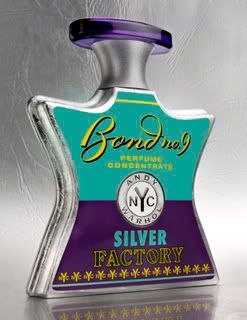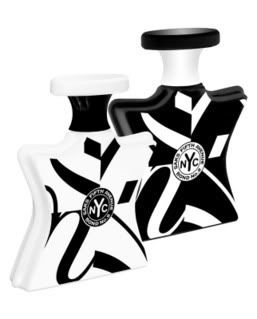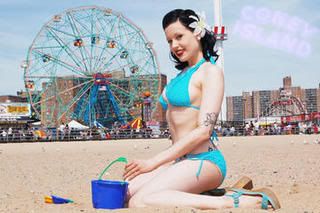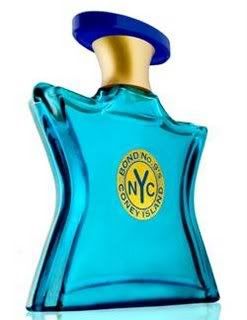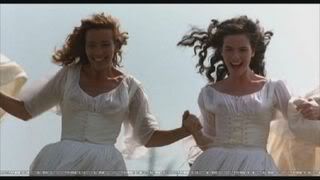.jpg) Hot on the heels of the news on a new Chanel in Les Exclusifs line, named Beige and mysteriously kept under wraps at Saks which however will carry it, as reported on Perfume Shrine first, here come the news on a new Hermessence.
Hot on the heels of the news on a new Chanel in Les Exclusifs line, named Beige and mysteriously kept under wraps at Saks which however will carry it, as reported on Perfume Shrine first, here come the news on a new Hermessence.AlbertCan had the scoop just yesterday:
"Hermès is in the midst of launching another Hermessence fragrance. Vanille Galante will be available at Hermès boutiques in around January 2009. The scent shall be issued in the usual Hermessence editions: the prices will be the same as the others as well".Perfume Shrine got excited and decided to flesh this out, so here we are.
In-house perfumer Jean Claude Ellena, responsible for the house's latest, the sleeper classic Kelly Calèche and the controversial Un Jardin après la Mousson, is now focusing on vanilla.
Generally vanilla is one of the most popular themes in perfumery, due to its almost universal appeal. It harks back to the glorious days of Jicky (1889) and if the latter is any indication it's not an easy feat to accomplish. Even legendary Chanel perfumer Ernest Beaux complained that "when he was trying for vanilla he got crème anglaise, while Guerlain came up with Jicky!" The secret to that, apart from coumarin, was that the then newly discovered chemical path to synthetic vanillin by JC.W Tieman left traces of phenol, which smelled tarry-smokey. Today the effect in Jicky is reproduced via adding a little rectified birch tar. Still, this story proves that a good vanilla needs to be a little molested in order to give out its best.
But in the new Hermès Vanille Galante, the sweet material is embedded in a composition that attaches the moniker of "galante" to it. The French adjective galant (or galante for feminine nouns) has an intriguing background: in the romans de cour/courtly literature, that is the medieval novels of nobility (example Le Roman de la Rose from 1420-30), "galant" signifies the quality of courteous, gentlemanly and often amorous. The phrase "en galante companie" thus signified the company of a representative of the opposite sex.
 Ellena being an intellectual man, might we expect in Vanille Galante a vanilla that is accompanied by a note which is its opposite, in order to highlight the true character all the more pronouncedly? Would it mean that vanilla essence, in itself a multi-complex natural material, should get a treatment like lavender had in Brin de Reglisse, the previous Hermessence from 2007? In that one, Ellena focused on the higher octaves of lavender absolute, which veer into caramel and licorice tonalities. Or the vetiver treatment he reserved for Un Jardin sur le Nil and Terre d'Hermes, in which he had molecules subtracted from the essence in order to arrive at a sparser, clearer, almost mineral vetiver message?
Ellena being an intellectual man, might we expect in Vanille Galante a vanilla that is accompanied by a note which is its opposite, in order to highlight the true character all the more pronouncedly? Would it mean that vanilla essence, in itself a multi-complex natural material, should get a treatment like lavender had in Brin de Reglisse, the previous Hermessence from 2007? In that one, Ellena focused on the higher octaves of lavender absolute, which veer into caramel and licorice tonalities. Or the vetiver treatment he reserved for Un Jardin sur le Nil and Terre d'Hermes, in which he had molecules subtracted from the essence in order to arrive at a sparser, clearer, almost mineral vetiver message?On the other hand, in musical terms, galant refers to the European style of classical simplicity after the complexity of the late Baroque era in the third quarter of the 18th century with pre-eminent representatives the rhythmical composers François Couperin, Jean-Philippe Rameau, Georg Philipp Telemann and Antonio Vivaldi . Their cyclical forma ties in with the theme of la Reverdie (return) in literary roman: that of eternal return of spring, a theme of pagan connotations .
The common trait would be the lyrical approach of solidly thematic subjects, which could sneak into the treatment of vanilla in Vanille Galante, or what I will from now on affectionaly call "péripéties de vanilla".
Vanilla is exactly the cliché note that begs for Jean Claude Ellena's modus operandi: chastiting it by food deprivation would be beneficial pedagogically, I feel. Vanillin (a natural developping aldehyde in vanilla pods and the most widely produced aromatic in the world) has its place in the arsenal of Ellena's carousel, as does ethyl maltol (the cotton-candy aromachemical first used in L'artisan's Vanilia, while maltol is also present in licorice, evident in Brin de Reglisse as discussed above). Nevertheless he has professed in an earlier interview that he is bored by "easy" notes such as vanillin and heliotropin. Yet he has produced his share of gourmand exempla, such as Bois Farine (2003), Elixir des Merveilles (2006) and Sublime Vanille (2001) for Lily Prune!
Vanilline however can be produced via gaïacol, eugenol or even lignine from cardboard manufacture. It's used in order to produce the scents of vanilla (of course), chocolate and banana. I am wondering whether those references might give Ellena some ideas on how to extend this note. Banana-peel is one of the nuances that some white florals, notably jasmine sambac and ylang-ylang, emit. However white florals have long been allied to vanilla and it strikes me as an unimaginative and too "talkative" coupling for an Ellena creation. Perhaps he will surprise us with a zen approach.
Additionally, Hermès wants to keep up with the competition in the niche stakes with other mega-houses: in this regard, Guerlain and its dark, rich Spiritueuse Double Vanille ~it proved to be such a good seller, that it was elevated from the status of limited, ephemeral edition into the permanent collection at Boutiques Guerlain and expanded to select doors(or was that the reverse marketing masterplan all along?, this scepticist is wondering).
Hermès can't break up the exclusivity factor of the Hermessences if Vanille Galante proves to be a bestseller without ruining the whole concept and shooting itself at the foot. What they could do however is keep the skeleton of the composition as the basis of their following feminine -most probably- fragrance. (two pieces of speculation at once, don't you love it here?)
The above constitute hypotheses on my part. We will update when more information becomes available from our sources. One thing seems for sure: We will be able to exclaim "Mais, c'est un Ellena!" (but it's an Ellena creation).
EDIT TO ADD: Six from Ambre Gris brought to my attention that it might be a simple allusion to Marie Galante, the island of the Caribbean located in the Guadeloupean archipelago. Constitutionally part of France, as Guadeloupe is an overseas région and département, MG is famous for its sugar cane but also cultures of tobacco, indigo, coffee and cotton.
Hermessences are available exclusively at select Hermès boutiques around the world. The bottles come at 100ml priced at 150 euros and there is also the option of a travel set of 4 aromisers of 15ml each (0.5oz) in either the same scent or 4 different ones in pre-arranged sets.
Read my full-on review of Vanille Galante following this link!

"Yvain secourant la damoiselle" from the Lancelot du Lac by Chretien de Trois manuscript. Vanilla pod and extract pic by Miri Rotkovitz(herbesspices.about.com)
.jpg)




.jpg)

.jpg)




.jpg)



.jpg)
.bmp)
